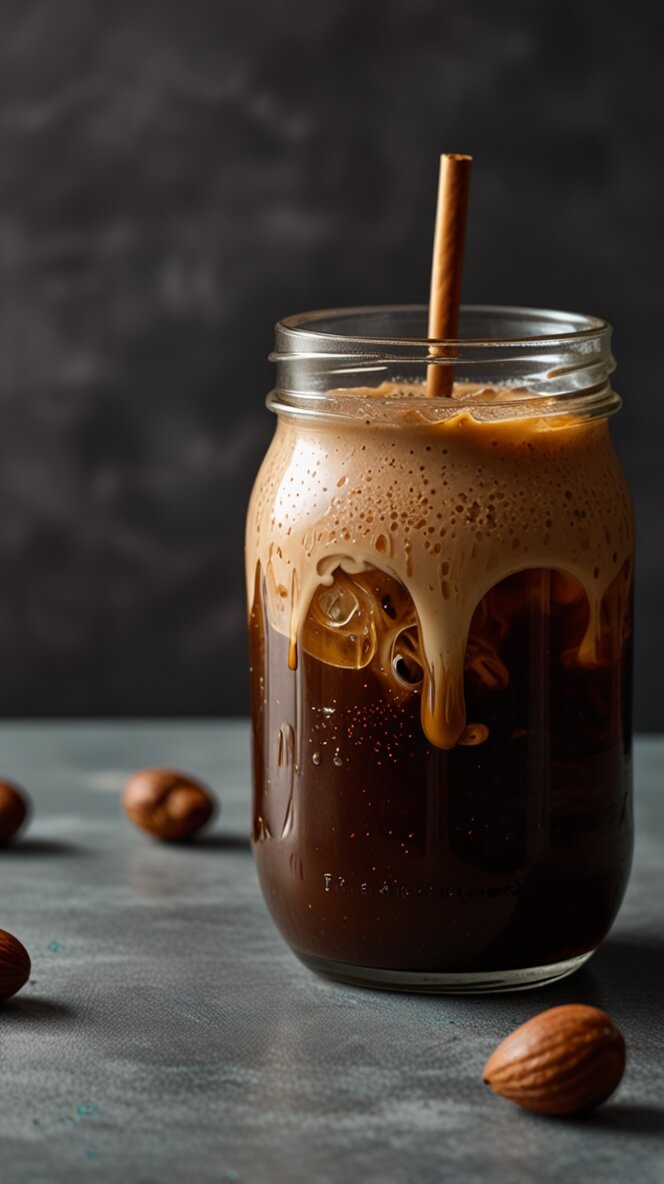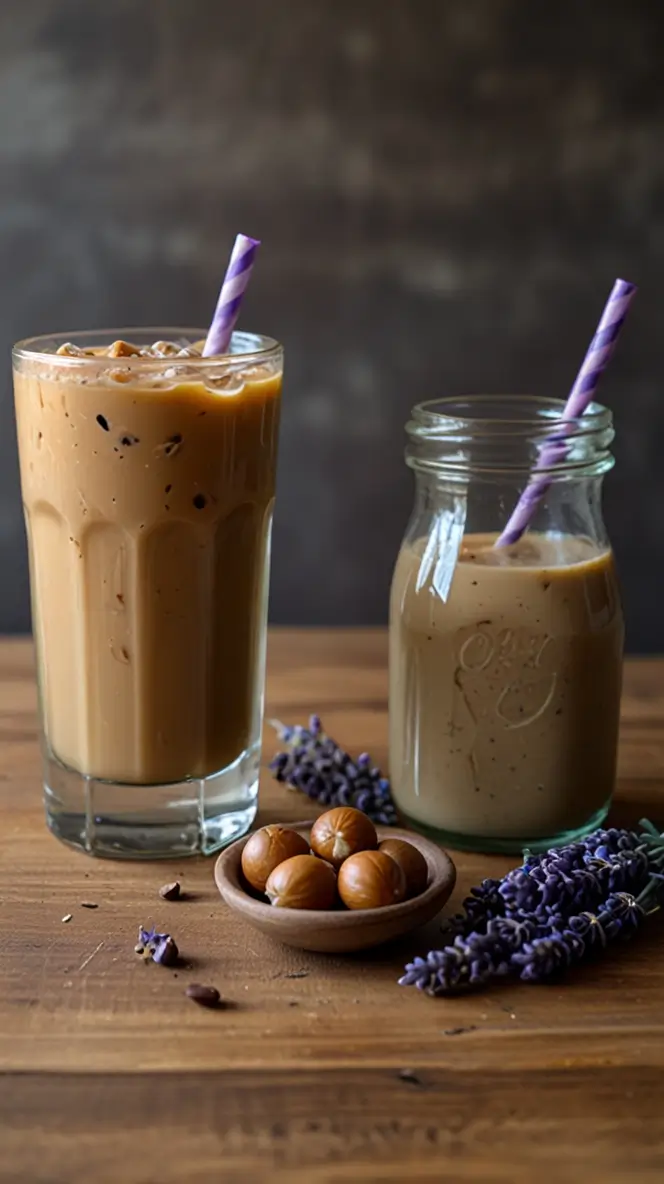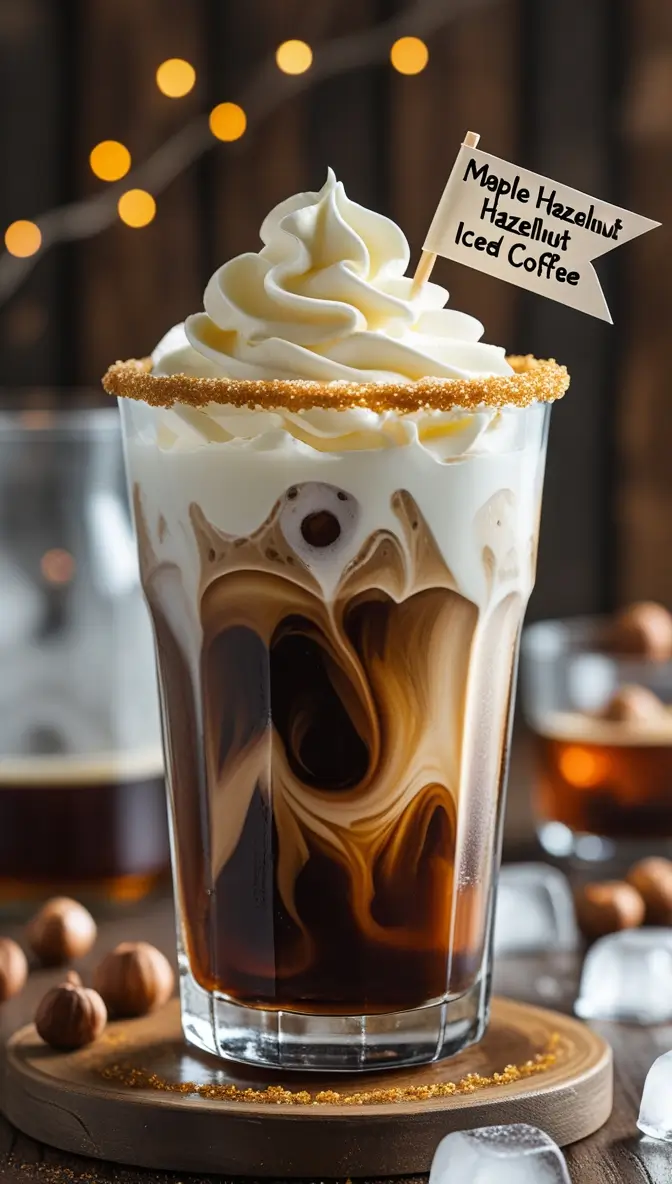12 Hazelnut Iced Coffee Recipes: Cool Down with Nutty Perfection

In the world of coffee, few flavor combinations rival the rich, creamy allure of hazelnut. As temperatures rise and summer beckons, the classic hot coffee gives way to its cooler, more refreshing counterpart: iced coffee. The marriage of smooth hazelnut and chilled coffee creates a beverage that’s not just a drink, but an experience – a moment of pure indulgence that tantalizes the taste buds and provides that much-needed caffeine boost.
Why Hazelnut Iced Coffee?
Hazelnut isn’t just a flavor; it’s a culinary journey that transforms ordinary coffee into an extraordinary sensory delight. The nutty, slightly sweet profile of hazelnut complements the robust depth of coffee, creating a harmonious blend that appeals to both coffee enthusiasts and casual drinkers alike. Whether you’re a home barista looking to elevate your morning routine or a caffeine lover seeking new taste adventures, these six hazelnut iced coffee recipes promise to revolutionize your summer beverage game.
1. Classic Hazelnut Iced Coffee Recipe

The Foundation of Nutty Refreshment
Every great culinary journey begins with a classic, and our hazelnut iced coffee is no exception. This foundational recipe serves as the perfect introduction to the world of hazelnut-infused cold coffee.
Ingredients:
– 1 cup strong brewed coffee, cooled
– 2 tablespoons hazelnut syrup
– 1/4 cup milk or cream
– Ice cubes
– Optional: Whipped cream for topping
Instructions:
1. Brew coffee and let it cool completely
2. Fill a glass with ice
3. Add hazelnut syrup and milk
4. Pour cooled coffee over ice
5. Stir well and garnish with whipped cream
2. Creamy Hazelnut Cold Brew

Smooth Sophistication in a Glass
Cold brew takes hazelnut iced coffee to a whole new level of smoothness. The slow extraction process reduces acidity and creates a remarkably silky texture that is perfect for hazelnut lovers.
Ingredients:
– 1 cup cold brew concentrate
– 3 tablespoons hazelnut cream
– 1/2 cup oat milk
– Ice
– Crushed hazelnuts for garnish
Instructions:
1. Mix cold brew with hazelnut cream
2. Add oat milk
3. Pour over ice
4. Sprinkle crushed hazelnuts on top
3. Nutella Hazelnut Iced Coffee

Decadent Chocolate Meets Coffee
For those who believe chocolate and hazelnut are a match made in heaven, this recipe combines the richness of Nutella with the robust flavor of coffee.
Ingredients:
– 1 cup strong coffee
– 2 tablespoons Nutella
– 1/4 cup heavy cream
– Ice cubes
– Chocolate shavings
Instructions:
1. Blend coffee with Nutella until smooth
2. Add heavy cream
3. Pour over ice
4. Top with chocolate shavings
4. Protein Packed hazelnut Iced Coffee

Fitness Meets Flavor
Combining nutrition with indulgence, this recipe transforms your iced coffee into a protein-rich powerhouse perfect for post-workout recovery.
Ingredients:
– 1 cup cold brew
– 1 scoop vanilla protein powder
– 2 tablespoons hazelnut butter
– 1/2 cup almond milk
– Ice
Instructions:
1. Blend all ingredients until smooth
2. Pour over ice
3. Optional: Garnish with cinnamon
5. Vegan Hazelnut Iced Coffee

Plant-Based Perfection
Dairy-free doesn’t mean flavor-free. This vegan recipe proves that plant-based alternatives can create a rich, satisfying hazelnut iced coffee experience.
Ingredients:
– 1 cup cold brew
– 3 tablespoons homemade hazelnut milk
– 1 tablespoon maple syrup
– Ice
– Coconut whipped cream
Instructions:
1. Combine cold brew with hazelnut milk
2. Add maple syrup
3. Pour over ice
4. Top with coconut whipped cream
6. Hazelnut Caramel Frappe

Blended Bliss
For those who prefer their coffee more dessert-like, this frappe transforms the traditional iced coffee into a luxurious, blended treat.
Ingredients:
– 1 cup strong coffee, frozen in ice cube trays
– 2 tablespoons caramel sauce
– 1/4 cup hazelnut syrup
– 1/2 cup milk
– Whipped cream
Instructions:
1. Blend frozen coffee cubes
2. Add caramel and hazelnut syrup
3. Blend until smooth
4. Top with whipped cream
7. Mocha Hazelnut Iced Coffee

Chocolate Lover’s Dream
A decadent fusion of chocolate and hazelnut that transforms your iced coffee into a luxurious dessert-like beverage.
Ingredients:
– 1 cup cold brew coffee
– 2 tablespoons cocoa powder
– 3 tablespoons hazelnut syrup
– 1/4 cup chocolate milk
– Ice cubes
– Dark chocolate shavings
Instructions:
1. Whisk cocoa powder into cold brew
2. Add hazelnut syrup and chocolate milk
3. Pour over ice
4. Garnish with chocolate shavings
8. Hazelnut Lavender Iced Coffee

Aromatic Elegance
A sophisticated blend that combines the nutty warmth of hazelnut with the delicate floral notes of lavender.
Ingredients:
– 1 cup cold brew
– 2 tablespoons lavender syrup
– 2 tablespoons hazelnut cream
– 1/4 cup almond milk
– Dried lavender buds for garnish
Instructions:
1. Mix cold brew with lavender syrup
2. Add hazelnut cream and almond milk
3. Pour over ice
4. Sprinkle dried lavender buds
9. Bourbon Hazelnut Iced Coffee

Adult Indulgence
A sophisticated cocktail-inspired iced coffee that brings a grown-up twist to your hazelnut coffee experience.
Ingredients:
– 1 cup strong coffee
– 1 oz bourbon (optional)
– 2 tablespoons hazelnut liqueur
– 1/4 cup heavy cream
– Ice cubes
– Cinnamon stick for garnish
Instructions:
1. Mix coffee with bourbon and hazelnut liqueur
2. Add heavy cream
3. Pour over ice
4. Garnish with a cinnamon stick
10. Coconut Hazelnut Iced Coffee

Tropical Fusion
A tropical twist that marries the richness of hazelnut with the smooth sweetness of coconut.
Ingredients:
– 1 cup cold brew
– 3 tablespoons coconut cream
– 2 tablespoons hazelnut syrup
– 1/4 cup coconut milk
– Toasted coconut flakes
– Ice
Instructions:
1. Combine cold brew with coconut cream
2. Add hazelnut syrup and coconut milk
3. Pour over ice
4. Top with toasted coconut flakes
11. Spiced Hazelnut Iced Coffee

Warming Complexity
A complex recipe that introduces warm spices to the classic hazelnut iced coffee profile.
Ingredients:
– 1 cup strong coffee
– 2 tablespoons hazelnut syrup
– 1/4 teaspoon cinnamon
– Pinch of nutmeg
– 1/4 cup oat milk
– Ice cubes
– Cinnamon stick
Instructions:
1. Mix coffee with hazelnut syrup
2. Add spices and oat milk
3. Pour over ice
4. Garnish with a cinnamon stick
12. Maple Hazelnut Iced Coffee

Rustic Sweetness
It is a rustic, comforting blend that combines the deep flavors of maple with rich hazelnut undertones.
Ingredients:
– 1 cup cold brew
– 3 tablespoons pure maple syrup
– 2 tablespoons hazelnut butter
– 1/4 cup whole milk
– Ice
– Maple sugar for rim
Instructions:
1. Blend cold brew with maple syrup
2. Add hazelnut butter and milk
3. Pour over ice
4. Rim glass with maple sugar
Advanced Hazelnut Iced Coffee Tips
– Store homemade syrups in the refrigerator
– Use filtered water for the best flavor
– Experiment with nut milk
– Invest in quality coffee beans
– Use fresh ice
– Consider temperature and dilution
Final Thoughts
These 12 hazelnut iced coffee recipes demonstrate the incredible versatility of this beloved flavor combination. From classic preparations to innovative twists, there’s a recipe to satisfy every coffee lover’s craving.
Embrace creativity, experiment with ingredients, and most importantly, enjoy the journey of crafting your perfect hazelnut iced coffee.
Pro Tips for Perfect Hazelnut Iced Coffee
– Use freshly brewed, high-quality coffee
– Experiment with different hazelnut syrups and creams
– Chill coffee completely before icing
– Use filtered water for the best taste
– Invest in good ice cube trays for optimal dilution
Conclusion
Hazelnut iced coffee isn’t just a beverage; it’s an art form. These six recipes demonstrate the incredible versatility and depth of flavor that hazelnut brings to your summer coffee experience. From classic preparations to decadent blended treats, there’s a hazelnut iced coffee recipe for every palate and preference.
Remember, the key to an exceptional hazelnut iced coffee lies in quality ingredients, careful preparation, and a willingness to experiment. So grab your favorite glass, and some ice, and let’s toast to summer – one nutty, refreshing sip at a time.






